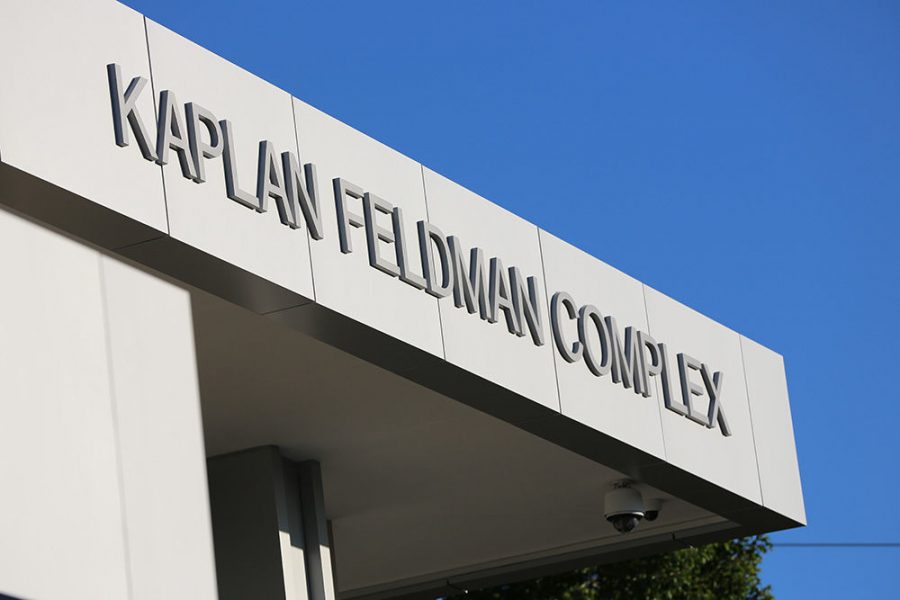Jewish Federation Annual Campaign raised $10.2 million
Published April 11, 2019
Despite continuing demographic challenges brought about by an increasingly elderly community, the Jewish Federation’s Annual Campaign met its goals by edging upward for the fourth straight year.
“We’re thrilled with the results,” said Joel Frankel, Federation campaign manager. “We’re so grateful for all of the community members who made it a successful year.”
The total represents slow but consistent growth for the umbrella agency, which netted $10.2 million during last year’s campaign. The annual campaign has increased by nearly $1 million since hitting the post-recession doldrums that brought it as low as $9.26 million in 2013. The campaign’s recent high-water mark came in 2007 when it topped $11 million. As the economy convulsed in 2008, that figure withered with six of the next seven campaigns showing year-to-year declines.
ADVERTISEMENT
Campaign vice-chair Tim Stern credits recent successes to an “engagement first” model introduced by former Jewish Federation President and CEO Andrew Rehfeld, who left in late March to become president of Hebrew Union College-Jewish Institute of Religion. In an op-ed for the Jewish Light, Rehfeld characterized the “engagement first” approach as a community-building strategy in which the Federation doesn’t present itself as a fundraising mechanism but rather as an organization seeking investors for its mission. Stern echoed that idea.
“Once you can engage [donors], it makes it a lot easier to ask for money,” he said.
Stern also lauded a new focus on regular calendar items like the campaign kickoff, a gathering for major donors and the Women’s Philanthropy L’Chaim event.
Frankel said that he felt the Federation was projecting a unifying message that it embodied all parts of the community as a whole. He also noted the results indicated that as well.
ADVERTISEMENT
“It really represented a cross section of age and affiliation so it really does show that the entire community is in support of our mission,” he said. “People really understand what we’re doing now. They are becoming more aware of what Jewish Federation is doing and the value we provide.”
While the number of donors moved up by about three percent, it still remains around the 4,500 mark, representing a range where it has been floating for several years. By contrast, in 2007 about 7,500 donors gave. A decade before that, the figure was nearly 10,000. Frankel said a dearth of discretionary income is to blame as well as demographic factors such as an aging donor base.
“It is really important that these results are coming when giving nationally is a difficult proposition,” Frankel said. “There are fewer donors every year giving to charitable causes.”
Still, he said that the stability of the last few years has at least stemmed the loss of donors. Now one key to future success lies in broadening the base to include more dollars from younger people. About two-fifths of the annual campaign’s money came from donors born before the end of World War II.
“That is absolutely something we acknowledge is part of charitable giving right now,” Frankel said. “We need to inspire the people who are younger to step up.”
He said the older generation can help with that by sharing their experiences.
“They are giving a lot of their time and a lot of their money to our community and we are so grateful for that,” he said. “Them being able to tell others why they are inspired to give is really important.”
Stern said that the Federation needed to continue to find ways to appeal to younger givers.
“That’s through events. That’s through utilizing social media,” he said. “It is by participating or offering programs that appeal to their interests. We’ve got to continue to evolve ways, through our engagement strategy, in which people can participate.”
Frankel notes that about 15 percent of the 30,000 or so Jewish households gave to the campaign.
“We know that there are a lot of people who are caring and passionate about the Jewish community who haven’t been inspired by the work of Federation yet,” he said. “Our goal is to continue to reach them and to deepen the knowledge of the people who are contributing even more.”
He continues to stress the idea that the Federation represents the entire Jewish community and can add value to philanthropic dollars.
“We can help leverage resources so people can get a more meaningful impact for their donation,” he said.
Stern puts it just as simply. He thinks this year’s figures represent a success.
“But the needs of our community are significant,” he noted. “They continue to grow and we need to continue to raise more money so we can invest it back into our community.”
In other figures beyond the yearly campaign, the Federation raised just over $20 million total in 2018 including revenue streams like endowments and targeted and planned gifts. That’s significantly below the $28.5 million recorded last year however Frankel said that, due to certain changes in processes, it is difficult to ensure the figures represent an “apples-to-apples” comparison.
The official goal for this year’s campaign was $10 million. Frankel said a goal for next year is being discussed but has not yet been determined.
“We’re looking to continue the positive momentum,” he said.
















